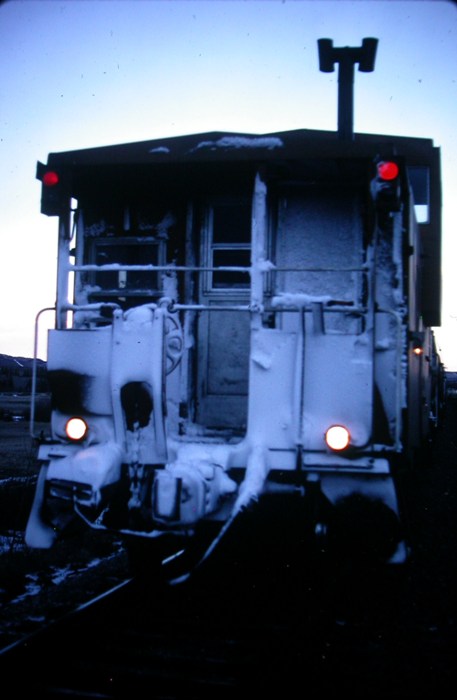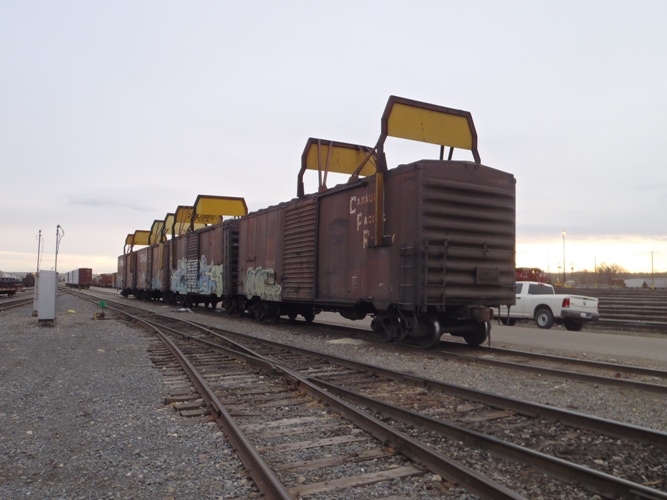
| WWT Shows | CLICK TO: Join and Support Internet Horology Club 185™ | IHC185™ Forums |

|
• Check Out Our... • • TWO Book Offer! • |
Welcome Aboard IHC185™  Internet Horology Club 185
Internet Horology Club 185  IHC185™ Discussion Site Main Page
IHC185™ Discussion Site Main Page  Interesting Horologically Based Stories
Interesting Horologically Based Stories  Larry Buchan's ..."Tales from the Rails"
Larry Buchan's ..."Tales from the Rails"  Canadian Pacific Railway's Spiral Tunnels
Canadian Pacific Railway's Spiral Tunnels
 Internet Horology Club 185
Internet Horology Club 185  IHC185™ Discussion Site Main Page
IHC185™ Discussion Site Main Page  Interesting Horologically Based Stories
Interesting Horologically Based Stories  Larry Buchan's ..."Tales from the Rails"
Larry Buchan's ..."Tales from the Rails"  Canadian Pacific Railway's Spiral Tunnels
Canadian Pacific Railway's Spiral TunnelsPage 1 2
Go  | New Topic  | Find-Or-Search  | Notify  | Tools  | Reply to Post  |  |
| Railway Historian IHC Life Member Site Moderator |
Hello Ed, thanks for your feedback, it's good to hear that people appreciate this history. I found some more slides from my caboose trip through the Spiral Tunnels, this view is taken from the caboose after emerging from the upper portal of Tunnel No. 2 it looks down onto the track that enters the lower portal, and the bridge over the Kicking Horse River is visible, also to the left-hand side of the tracks is the mileboard for the west switch of the old siding at Yoho that is about 1500 feet ahead of us.  | |||
|
| Railway Historian IHC Life Member Site Moderator |
This view looking back shows the Maintenance of Way cars stored at Yoho, it was demoted from siding status to storage track back in the 1960s when CTC was installed across the subdivision. These cars and coaches were occupied by the gang who were responsible for clearing the icicles that formed in the two tunnels during the winter.  | |||
|
| Railway Historian IHC Life Member Site Moderator |
I took this photo in Alberta at the siding at Radnor that is situated about 33 miles west of Calgary, the weather is somewhat milder, and there is not as much snow, we are in the siding waiting for a westbound.  | |||
|
| Railway Historian IHC Life Member Site Moderator |
This shot shows the tail end of our caboose with the red electric tail end markers lite up, and the white track inspection lights on. You can see lots of snow that has swirled around the tail end of our train in our hundred mile journey from Field.  | |||
|
| Railway Historian IHC Life Member Site Moderator |
Ice was a big operating problem through the winters on Field hill's spiral tunnels, earlier in the diesel era when CPR instituted The Canadian in 1955 with Its glass domed Park cars on the tail end, and the Skyline cars in the middle. Passenger diesel locomotives were equipped with icebreakers on the roofs to prevent damage to these special coaches on the train. Here is a view of the roof of a passenger diesel locomotive on No. 2 arriving in Calgary during the winter of 1978, you can see the bulkheads fastened to the roof of the locomotive.  | |||
|
| Railway Historian IHC Life Member Site Moderator |
I've also attached a photo showing the glass domed Park car on No. 2 at Brooks, Alberta 100 miles east of Calgary about the same time.  | |||
|
| Railway Historian IHC Life Member Site Moderator |
And another view of a Park car on No. 1 at Medicine Hat, Alberta, visible on the tail end is the "Canadian" drumhead, and to the right is a CPR RDC Budd car ready to depart Medicine Hat for Lethbridge, Alberta.  | |||
|
| Railway Historian IHC Life Member Site Moderator |
And here is a view of a Skyline car on eastbound No. 2 approaching the trestle over the Kicking Horse River east of Field, B.C. in the summer of 1979, I took this photo from the cab of the leading diesel locomotive.  | |||
|
| Railway Historian IHC Life Member Site Moderator |
While the icebreaking equipment works satisfactorily for the passenger trains, another clearance issue came up in the mid-1960s CPR was investing money in new rolling stock for moving freight, automobiles had been traditionally shipped in specially designed box cars that had end opening doors, and extrawide side doors to accommodate loading and unloading, Here is a photo of a CNR end loading automobile boxcar.  | |||
|
| Railway Historian IHC Life Member Site Moderator |
CPR ordered special open decked tri-level and bi-level auto carriers that were much easier to load and offload, and could handle many more vehicles than the box cars could hold. Winter operation of freight's carrying the special dimensional cars with their higher profile became a headache for trains going through the icebound tunnels.  | |||
|
| Railway Historian IHC Life Member Site Moderator |
A bi-level  | |||
|
| Railway Historian IHC Life Member Site Moderator |
A solution came about at the CPR's Ogden locomotive shop where I worked in 1966, a fleet of older 40 ton capacity box cars, with their characteristic narrow doorways were pressed into service, the cars were filled with rock ballast, and the doors welded shut, special steel bulkheads were fabricated and welded to the roofs of these service cars and sent to Alyth Yard in Calgary where they were put to the head end of westbound freight trains carrying the excessive dimensional auto traffic, they were all lumbered from CP 410001 and they are are still in use today here are some photos of the fleet at Alyth, although covered in graffiti they are still hard at work after 45 years in service.  | |||
|
| Railway Historian IHC Life Member Site Moderator |
End view of CP 410012  | |||
|
| Railway Historian IHC Life Member Site Moderator |
Side View of CP 410012  | |||
|
| Railway Historian IHC Life Member Site Moderator |
I notice that the bulkheads on top have been modified, I'm sure this was done in the late 1990s when the CPR started operating trains with double stacked container cars, to accommodate this traffic the floors of the spiral tunnels had to be lowered 6 inches to accommodate the shipment of these cars with excessive overhead clearance.  | |||
|
| IHC Vice President Pitfalls Moderator IHC Life Member |
Very cool Larry. Your pictures remind me of the Spring Break trip to Florida in the 1960's with my family when we took the Amtak Auto Train from Lorton, VA to Sanford, Florida. Our car was loaded on a fancier version of one of those in your pictures. We had sleeping car service, a great adventure! I was fascinated with the loading & unloading of the cars & observed as much of it as I could. Best Regards, Ed | |||
|
| Powered by Social Strata | Page 1 2 |
| Your request is being processed... |
|
Welcome Aboard IHC185™  Internet Horology Club 185
Internet Horology Club 185  IHC185™ Discussion Site Main Page
IHC185™ Discussion Site Main Page  Interesting Horologically Based Stories
Interesting Horologically Based Stories  Larry Buchan's ..."Tales from the Rails"
Larry Buchan's ..."Tales from the Rails"  Canadian Pacific Railway's Spiral Tunnels
Canadian Pacific Railway's Spiral Tunnels
 Internet Horology Club 185
Internet Horology Club 185  IHC185™ Discussion Site Main Page
IHC185™ Discussion Site Main Page  Interesting Horologically Based Stories
Interesting Horologically Based Stories  Larry Buchan's ..."Tales from the Rails"
Larry Buchan's ..."Tales from the Rails"  Canadian Pacific Railway's Spiral Tunnels
Canadian Pacific Railway's Spiral Tunnels©2002-2025 Internet Horology Club 185™ - Lindell V. Riddle President - All Rights Reserved Worldwide

